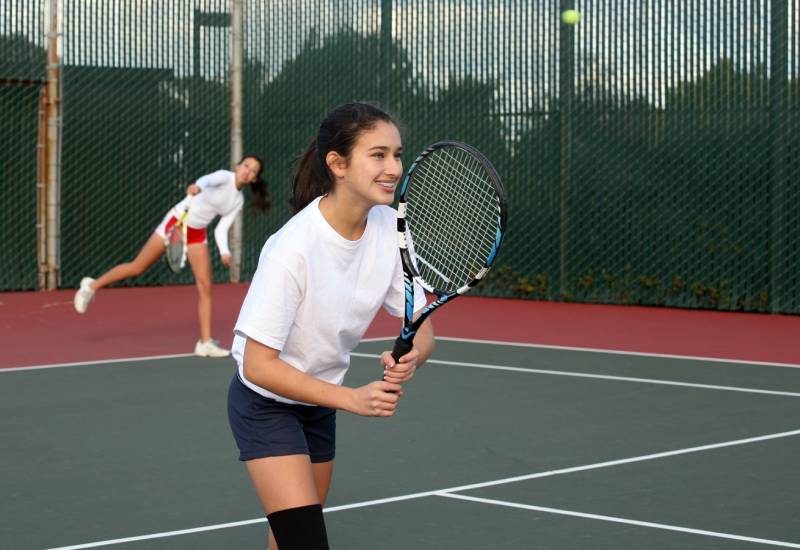Tennis is a sport that combines finesse and power, and while your skills on the court matter, the equipment you wield also has a pivotal role in your play. The tennis racquet is your primary tool, and understanding its anatomy can significantly affect your performance. Whether you just joined your high school team or have been hitting the courts for years, a deeper insight into your racquet’s components can enhance your play. Follow along as we dive into the anatomy of a tennis racquet and the vital parts to know about.


The Frame
The frame is the backbone of your racquet, influencing the weight, balance, and overall feel. Typically made from materials such as graphite, titanium, or even Kevlar, frames provide a blend of power and control. Lighter frames offer more maneuverability, making them ideal for quick volleys at the net, while heavier ones can give your groundstrokes a bit more punch. The size of the frame also affects your play; a larger frame offers a greater hitting surface or “sweet spot,” but it might sacrifice some control in the process.
The Strings
Strings affect the racquet’s feel and the ball’s behavior upon impact. Their materials range from natural gut to synthetics such as nylon and polyester, each offering different benefits. Natural gut, for instance, provides excellent tension retention and a lively feel, and synthetic strings are more durable and offer varying degrees of control. String tension is another critical factor; higher tension heightens control, while lower tension can increase leverage and, therefore, power. The string pattern (open or dense) also plays a role, affecting spin and feel.
The Grip
The grip is where your hand meets the racquet, and getting this part right is crucial for comfort and control. Grips come in various sizes and styles, tailored to fit any hand. A grip that’s too small can cause the racquet to twist in your hand, while one that’s too large might limit your wrist movement. Additionally, you can add overgrips for extra comfort or adjust the grip size without altering the racquet itself.
The Head
Another vital part of tennis racquet anatomy to know about is the racquet’s head. The head of the racquet determines its power and control characteristics. Larger heads provide more power and a bigger sweet spot, which is perfect for beginners or those looking to add some oomph to their shots. Smaller heads, on the other hand, offer seasoned players more precision and control, making these heads ideal for placing the ball exactly where they want it on the court. So, if you’re looking to hone your game for the upcoming season, give a racquet with a slightly smaller head a try.
The Weight and Balance
The distribution of weight within the racquet affects its swing weight and balance. Head-heavy racquets provide power and stability on groundstrokes, while head-light racquets offer better control and are easier to maneuver at the net. Finding the right balance is a matter of personal preference and playing style. Spend some time experimenting to find the ideal match for you.
Every component of a tennis racquet plays a significant role in its functionality and your performance on the court. By understanding the nuances of your racquet’s anatomy, you can make informed choices about your equipment that align with your playing style and goals. When you’re looking to improve your game and take your school farther this season, your racquet choice is one of the best places to start.

